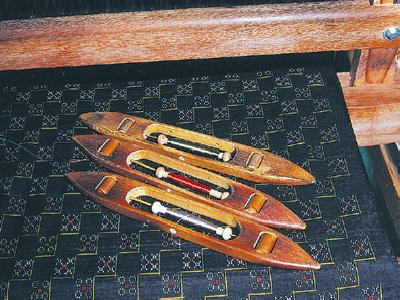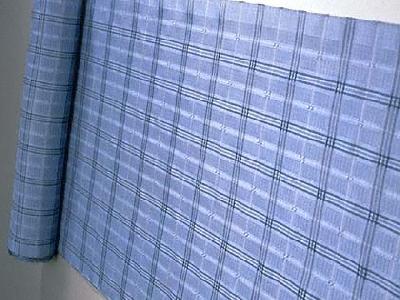|
Kakou Moriguchi was born in 1909 in Moriyama district, Shiga prefecture. In 1921, he studied pharmacy at night school. In 1924, he became the student of the 3rd yuzen dyeing master, Kason Nakagawa, and studied the Japanese art of hikita houshou.
Until he established a studio in 1939, he remained in the atelier of Kason, where he made further studies of yuzen. Later, he blended typical makinori techniques inherited from the Edo period and urusshi-no-makie. The blend Moriguchi created is called 'makinori' and has become representative of his work. It has both a traditional Kyoto flavor and a contemporary one. As a result, he has given something new and original to yuzen.
In 1956, he entered three makinori yuzen kimonos: 'Oshidori', 'Soushun' and 'Matsu' to the 2nd Exhibition of Japanese Traditional Art Crafts and all of them won a prize. For the 3rd Exhibition of Japanese Traditional Art Crafts, his yuzen kimono 'Kaoru' again won a prize. Consequently, he was elected to be the judge of the competition.
In 1968, when only 57, he became the holder of an important intangible cultural asset. He is one of Japan's Living National Treasures.
Until he established a studio in 1939, he remained in the atelier of Kason, where he made further studies of yuzen. Later, he blended typical makinori techniques inherited from the Edo period and urusshi-no-makie. The blend Moriguchi created is called 'makinori' and has become representative of his work. It has both a traditional Kyoto flavor and a contemporary one. As a result, he has given something new and original to yuzen.
In 1956, he entered three makinori yuzen kimonos: 'Oshidori', 'Soushun' and 'Matsu' to the 2nd Exhibition of Japanese Traditional Art Crafts and all of them won a prize. For the 3rd Exhibition of Japanese Traditional Art Crafts, his yuzen kimono 'Kaoru' again won a prize. Consequently, he was elected to be the judge of the competition.
In 1968, when only 57, he became the holder of an important intangible cultural asset. He is one of Japan's Living National Treasures.
| [+ADDRESS] | 
|



















